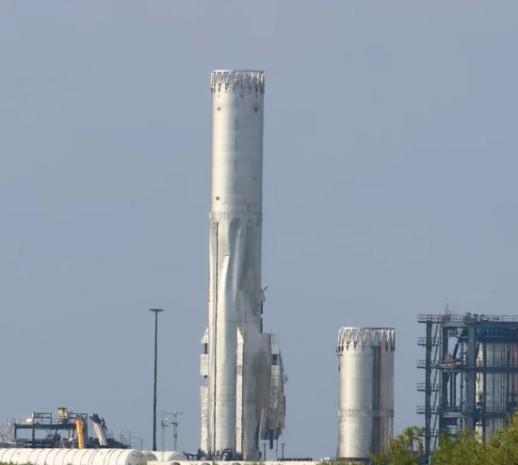
Breaking News
 SpaceX Might Lose Almost No Time for Booster Shell, COPVs and Test Tank Loss
SpaceX Might Lose Almost No Time for Booster Shell, COPVs and Test Tank Loss
 Netanyahu Says Rubio Assured Him Saudi Arabia Will Not Receive F-35s On Par With Israel
Netanyahu Says Rubio Assured Him Saudi Arabia Will Not Receive F-35s On Par With Israel
 Elon Says the Quiet Part Out Loud: AI Will RULE Humans, No More Money, BILLIONS of Robots
Elon Says the Quiet Part Out Loud: AI Will RULE Humans, No More Money, BILLIONS of Robots
 Central Bankers Disagree About Gold
Central Bankers Disagree About Gold
Top Tech News
 Mach-23 potato gun to shoot satellites into space
Mach-23 potato gun to shoot satellites into space
 Blue Origin Will Increase New Glenn Thrust 15-25% and Make Rocket Bigger
Blue Origin Will Increase New Glenn Thrust 15-25% and Make Rocket Bigger
 Pennsylvania Bill – 'Jetsons Act' – Aims To Green-Light Flying Cars
Pennsylvania Bill – 'Jetsons Act' – Aims To Green-Light Flying Cars
 New Gel Regrows Dental Enamel–Which Humans Cannot Do–and Could Revolutionize Tooth Care
New Gel Regrows Dental Enamel–Which Humans Cannot Do–and Could Revolutionize Tooth Care
 Researchers want to drop lab grown brains into video games
Researchers want to drop lab grown brains into video games
 Scientists achieve breakthrough in Quantum satellite uplink
Scientists achieve breakthrough in Quantum satellite uplink
 Blue Origin New Glenn 2 Next Launch and How Many Launches in 2026 and 2027
Blue Origin New Glenn 2 Next Launch and How Many Launches in 2026 and 2027
 China's thorium reactor aims to fuse power and parity
China's thorium reactor aims to fuse power and parity
 Ancient way to create penicillin, a medicine from ancient era
Ancient way to create penicillin, a medicine from ancient era
SpaceX Might Lose Almost No Time for Booster Shell, COPVs and Test Tank Loss

UPDATE SpaceX says they will stack the Booster 19 Super Heavy Booster in December, 2025. They plan to keep the flight test for First Quarter 2026.
This was the loss of only the shell, COPVs and test tank. It was a routine gas-system pressure test. It was before structural proof testing. The LOX tank ruptured around 4:04 a.m. CT on November 21, crumpling and blowing out the lower section (aft/LOX tank area) while leaving the upper structure partially intact.
Currently, the Booster is being held up by the new, larger Liquid Methane (LCH4) transfer tube, and it is unknown how SpaceX will safe this vehicle so that crews can return to Masseys. SpaceX either needs to find a way to collapse the booster safely and then clean up the scraps, or use the LR11000 crane at Masseys to stabilize it and scrap it.
The two-three month delay adjustments to avoid delay means that 2026 Starship work can still focus on NASA HLS tests and refueling work needed and keep schedules. The start and ramp of Starlink version 3 launches will not slip if launch is still good in Q1 2026.
Booster 19 hasn't even started its stacking process in Mega Bay 1, and even if it were to start today, barring any investigation and modification time, the booster testing schedule might still be maintained.
Another consequence of this failure is that SpaceX no longer has a booster to commission Pad 2. This is a big deal, as all the tank farm equipment must be tested during vehicle loading to verify that it works correctly. SpaceX could try to modify B18.1 to fit inside the launch mount for testing, or teams could try to salvage the aft section of Booster 18 and stick some small tanks on it. SpaceX plans to have a booster in a 2-3 weeks.
If root cause ties to a V3-specific change then a minor redesign could add 1-3 months. So best case of no delay and worst case about 2 months. Three test launches at least would be needed to get to a certified V3 that is going to orbit and reusable.
Each Super Heavy requires ~28-30 rings (4m-tall stainless steel cylinders, ~9m diameter, ~1-2 tons each). ~4 for the engine section (thrust puck), ~10-12 for the LOX tank (including domes), ~10 for the methane tank, and ~4-6 for the interstage/forward section.

 Unbanked In A Connected World
Unbanked In A Connected World

